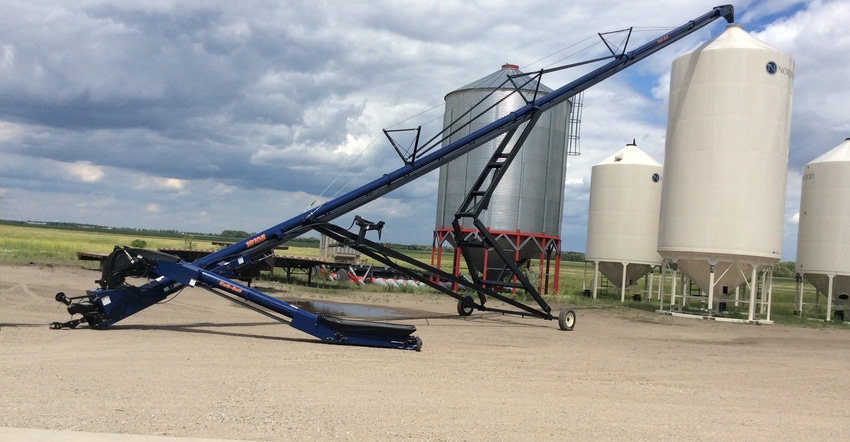March 15, 2019

Sponsored Content
Ryan Christopherson farms in one of the highest corn producing areas of the United States in west central Minnesota – #3 producing county in the United States. When farming 5,000 acres in one of the most productive regions for yields, you need to be able to move things at higher volumes and higher speeds. One area for improvement is increasing the speed from the semi to storage or from the tenders to the planters.
Higher Capacity was the answer for Ryan, “So, I called the guys at Norwood. I told him we were looking for a stainless-steel conveyor with stainless bearings. He told me about the 1838TDFL all stainless conveyor. Said it had about twice the capacity compared to the competitor’s unit which we were using.
This all sounded good to Christopherson, so he bought his first Norwood stainless-steel conveyor. “The first thing we noticed was it had more than twice the capacity of our older unit. We were running 20-25 minutes to empty a semi load of fertilizer. With this new Norwood we were down to 12 minutes or 6 minutes a hopper.” In addition, speeding up the loading of their 4 fertilizer tenders 60 to 65% is very significant in the rush to get all acres covered each year.
Christopherson noted the Norwood rig uses PEER Stainless Steel bearings. “You can buy several different brands of bearings. Yes, these Peer bearings cost about 50% more than a mild steel bearing but they last indefinitely. We were getting one, maybe two seasons out of the bearings in our old conveyor. Now we’re getting three or more seasons before having to put in new bearings; making the higher capacity a bonus. Figuring labor and time involved when replacing bearings, these PEER bearings cost about a third of mild steel bearings. Plus, it’s eliminating the hassle of finding the one ‘stuck’ bearing.”
Putting the belt to work in the fall has it’s advantages as well. With an 18-inch belt, moving bushels upwards of 8,000 bushels an hour is realistic. Again, capacity is gained with the larger belt size.
As you might expect the Kwik-Belt often becomes a dual-purpose machine. When planting, farmers will use the unit to move seed from bulk pallets into the seed hoppers of their planters and then turn around and use the same rig for unloading their grain bins too. From seed to fertilizer to grain, a bigger belt, more horsepower, and greater durability gives farmers the tools to do more.
So there you have it:
More capacity with 18-inch 2 ply chevron belt.
Bigger capacity because of bigger power…12 ½ hp versus 10 hp.
PEER Bearings, 1 ½-inch size versus 1 ¼ -inch gives more durability.
To learn more about the KWIK-BELT or to find a local dealer, please visit NorwoodSales.com
About the Author(s)
You May Also Like




